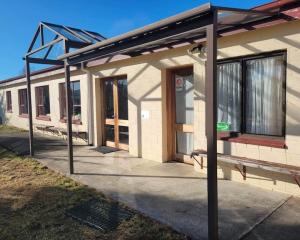
The Ministry of Primary Industries confirmed this week it was alerted by a Southland veterinary practice on July 23 of dairy cattle dying from lead poisoning on a Southland farm. The cattle had been grazing fodder beet grown on leased land owned by the Nightcaps Clay Target Club at Wreys Bush.
"Approximately 20 affected cattle, from a mob of about 100 cows, died or were euthanised at that time, the farmer subsequently chose to humanely slaughter the remaining cattle. Some of the cattle were pregnant," MPI said in a statement issued to the Fiordland Advocate.
Environment Southland worked with the MPI and the farmer to offer advice on various disposal methods for the cows.
"The decision by the owner to bury them in an offal hole was not Environment Southland's preferred choice, however, at the time it did meet the rules under the Solid Waste Management Plan as a permitted activity. New rules that came into effect on1 September 2014 would have tightened the requirements in this situation. Staff provided best practice advice for the disposal," the statement says.
Environment Southland will also assess the risks of discharge to water.
Cattle were removed from the affected paddocks to safe grazing and have been monitored through tests on blood and milk to confirm milk from the cows was safe.
The affected paddock in which cows ingested the high levels of lead has been isolated and the crop destroyed. No cows are milked on the affected property.
Fonterra's general manager of milk supply, technical and assurance, Dianne Schumacher, said the herd was not milking at the time of the exposure and there was no food safety risk.
"This has enabled us to focus our efforts on supporting the farmer and make an assessment on whether a similar event could impact any of our other farmers," she said.
"Fonterra has undertaken blood testing of the animals as well as soil and milk testing to provide both the farmer and our cooperative with further reassurance that the risk is managed."
Meanwhile, the MPI has placed the farmer under a surveillance notice meaning none of his cattle, including bobby calves, can be traded, slaughtered or moved out of his control until MPI has quantified the risk, and agreed risk management strategies are in place.
"Animal products will not be allowed to enter the food chain until the risk of high levels of lead in the products has been assessed and found to meet New Zealand and international requirements," the MPI statement said.
As an added precaution, sheep which have grazed near the gun club property have also been placed on a surveillance list to to determine whether they pose any risk. The MPI says this is a normal precaution while risks are investigated and the restrictions will be lifted as soon as it is satisfied they are no longer necessary.
Gun club sites are registered as a Hazardous Activities and Industry List activity. Environment Southland says it will now classify the land based on MPI's testing of the soil.
"This process will determine the presence or absence of contamination and result in recommendations for managing the site, which will be advised to the owners."
When asked what associated implications this situation posed for other gun clubs and the grazing of land around similar zones, such as duck ponds, Environment Southland replied: "whoever owns the property is required to mitigate the risk".
Fonterra has confirmed it has undertaken a review of its farmers who are located close to gun clubs and is in the process of compiling the results. It also intends working with the MPI, local authorities and other dairy companies on this issue. Environment Southland says it was advising all gun clubs of the risks and responsibilities for managing their sites. The MPI says it is not aware of the situation arising elsewhere in New Zealand.
Southland District Mayor Gary Tong said he learned of the situation at Wreys Bush through a third party and had subsequently made inquiries of both district and regional council staff who had confirmed a contamination was being managed by the MPI and Environment Southland.
He had also looked into the district council's role. He said a gun club was operating on a council-owned property at Kapuka South and the council had ensured no stock was grazed there. A former shooting range near Te Anau had also been recognised as contaminated land and an effective covenant was in place restricting building and grazing.
However, Mr Tong said he was concerned that current legislation appeared to be more about managing sites already contaminated, rather than mitigating risk from new or existing activities and this was something that warranted further investigation.
Brett Robinson, an associate professor in the soil science department at Lincoln University, said he was not directly aware of the Southland situation but said it was well acknowledged that any site where lead shot had been used should be assumed to be contaminated.
However, he said neither pasture grass nor fodder beet took up lead in any great quantities except in extremely highly contaminated sites which was unlikely in this case. It was more likely the cows had ingested contaminated soil and possibly also lead pellets as the fodder beet crop was uprooted.
"That's the likely exposure pathway, without knowing anything about the case."
Environment Southland confirmed the lead had become embedded in the fodder beet which was ingested by the cows.
New Zealand Clay Target Association president Trevor Manson said he was informed by the MPI that dairy cows had contracted lead poisoning while grazing on a property owned by one of its member clubs but the MPI had not told him which club – he had to find that out himself.
He said he did not feel qualified to comment on the incident but confirmed the national organisation had environmental management systems available to it for use by members.
Kirsty MacNicol of the Fiordland Advocate











